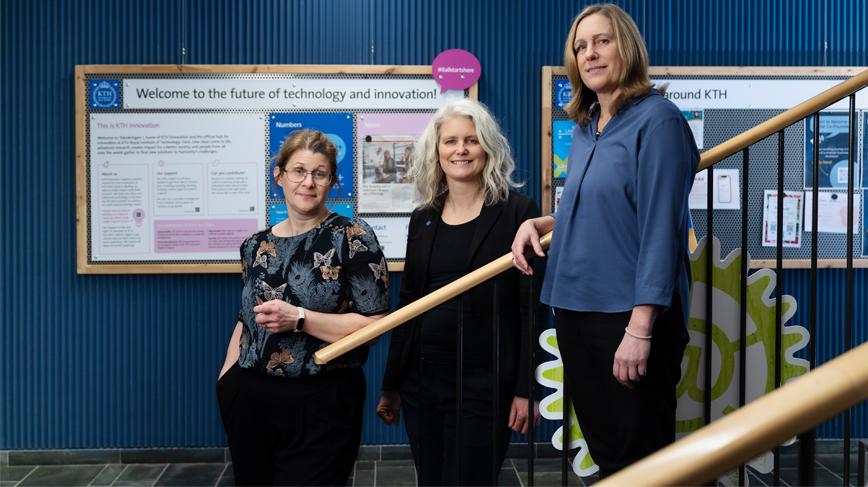‘We want research support to reach out wider’

As part of the joint support services’ ongoing development work, mapping and analysis is being carried out in several support areas, including those in scientific research.
“We hope this work will deepen support and cooperation with KTH’s schools,” says Maria Haglund, Head of KTH Library.
Leading the work together with Maria Haglund is Maria Gustafson, Head of Research Support Office (RSO) and Lisa Ericsson, Head of KTH Innovation. For their part, the road to a joint support services function is about finding common ground, having clearer communication within the organisation and getting the time and space to work on improvements that may help KTH researchers.
“For us, it’s not about merging with what would be our equivalent at the various schools, like it is in many other support areas. Rather, it’s more about putting the focus on development and raising the profile of positions and clarifying the research support and the various available support functions,” Lisa Ericsson says.
“We have examined which parts of the support might be enhanced and tried to map out the various schools needs to see how our support may best facilitate the research and innovation process. Basically, there’s a huge amount of expert knowledge about various processes. That’s something we need to communicate more effectively about within KTH,” adds Maria Gustafson.
The work towards joint and aligned support services – where the aim is for students, teachers, researchers and other co-workers to get equal and accessible support regardless of where they are at KTH – comprises several groupings within the support functions who have done their mapping and analysis and defined their developmental needs during 2022. And now it’s not long until the start of the new organisation for joint support services, on 1 January 2023. This development work is set to continue until 2026.
One goal is to create clarity about how researchers access support and to both develop existing roles and find new development areas. So that all positions offered within different projects and parts of research support get used even more.
“During the mapping-out and preparation work process, we had an opportunity to walk side by side with a greater part of KTH. That will hopefully facilitate the work going forward, so we become more effective. Basically, it’s also a lot about strategy and what type of workplace we want to be. We want to make the support for researchers more visible, regardless of whether it’s about the RSO, positions at the library or, for example, the support that KTH Innovation is committed to,” says Maria Haglund.
One fundamental aspect that was closely looked at concerns the research funding support.
“Research funding is an area that gets support and which we need to be better at communicating about. Many researchers would benefit from the support that’s already on offer and the support functions’ expert knowledge can be a great advantage in helping to increase grant levels,” says Lisa Ericsson. Maria Haglund adds:
“This also applies to the support available within the publishing and research data area. It’s complex and going through changes – it may be hard for an individual researcher to keep up with these latest updates.”
Maria Gustafson concludes:
“To summarise simply, it needs to be easy to do correctly. We’re going to get there –everyone needs to know what the available support is and how to take part in it.”
Text: Annelie Englund

